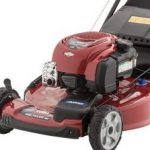Not everyone who starts the hobby of gardening is a seasoned horticulturist. Some times the fun in getting involved in something new is to learn as you go. Still, there are some tips that could prove to be helpful to neophyte gardeners as they start off on their journey to be expert gardeners. Here are a few.
· Keep a diary. Keep a record of things that go on in your garden. Include photos and provide details about where the plants were purchased and where the plant is located in your garden.
· Create a no-stick shovel. Spray silicone or Teflon lubricant on your shovel so that dirt won’t cling to it.
· Create lighter pots. A heavy pot is difficult to lift, but what if some of the content is taken up by packing peanuts? Fill a large planter or pot about one-third to one-half full of packing peanuts. Lay a landscape fabric on top and then layer on the potting soil. Then use a potting mix with a lot of vermiculite or peat moss. Now the pot or planter is not laden down with soil and it is easier to pick up and move.
· Prepare to transport plants. The next time you make a run to the neighborhood nursery, put a plastic tarp on the floor of your car and lay a ladder on top. The area between the steps of the ladder can serve as a perfect place in which to put plants so they are protected on the drive home. By the way, it also keeps your car clean.
· Make your rain gauge easier to read. Put a few drops of coloring in the bottom of your rain gauge. When it rains and the gauge captures the drops the water will mix with the dye and the gauge will be easier to read.
· Manage aggressive plants. Some of the prettiest plants can be super aggressive and left unchecked could take over your garden. To prevent this simply place the plant in a plastic container with its bottom cut out and then plant the container and plant into the garden. The plant’s roots will not be limited by the container and will grow directly down into the soil.
· Prevent the roots from bounding to the plant. Whenever a plant starts off growing in a pot, its root growth is restricted. So when transplanting to your garden use your fingers to release the roots from the root-ball and spread them out. If the roots are “locked up” and it is difficult to separate them with your fingers, carefully make vertical cuts in the root-ball with a knife to loosen them.
· Protect your bulbs from local critters. Wildlife like deer or rabbits are attracted to your garden and may make a meal out of just planted flower bulbs. Stake down netting over the garden area where the bulbs are located and remove the netting when spring comes.
· Transportable potting. Wouldn’t it be easier to prepare your pots at the garden? Use wood cleats to attach a segment of plywood onto the back end of your wheelbarrow. That will provide you with a portable and flat surface on which you can transport soil and containers in which you can pot plants from your garden or transport potted plants to be transplanted into the garden.







